Urban Vancouver, a Model for Milwaukee?
Lacking the back-to-back skyscrapers of New York of Chicago, its smaller-scale urbanity is a marvel that Milwaukee could emulate.
Last week we took a look at Seattle and its thriving urban environment. Next we head north to Vancouver, Canada.
My fiance and I arrived in the heart of the city via Amtrak’s Cascades Service. While I had hoped we would get to ride the new Milwaukee-made Talgo equipment the route is using, we ended up on the last generation of Talgo equipment (still significantly better than what Amtrak and Wisconsin use on the Hiawatha train to Chicago). If you have a choice on how to travel between Seattle and Vancouver, take the train.
Vancouver is an eye-opening city. Though it’s in Canada, Vancouver on the street-level feels largely like its American peers in the Pacific Northwest, with one exception. Its density is unreal. The Vancouver region is significantly smaller than Seattle and roughly the size of Portland, but Vancouver feels like a city at least twice its size. I’ve broken it down in the chart below. I included the regional numbers for population-weighted density (explained), which is now recognized by the US Census Bureau (and proves why Milwaukee is denser than most of its peers). The chart shows that even Vancouver’s suburbs are denser than much of Portland and Seattle.
Vancouver’s density manifests itself in a downtown core that is filled with well-situated high rises (they’re countless, but rarely seem to block the view of another), but also with an extensive list of neighborhoods that have high densities without the high rises. Following the spine of the SkyTrain (subway and elevated rapid transit system), a number of nodes can be seen in the suburbs that have high rises as well. Vancouver lacks the traditional central business district, historic urban core, suburbs and exurbs layout of most major American cities. Instead, it has a very dense downtown, but the rest of the region also has considerable density, with a number of nodes that are denser than many American downtowns.
Perhaps the most welcoming fact about Vancouver for a tourist (traveling without a car) is that the city isn’t built around the car, even the new developments. It’s a very pleasant for walking or bicycling with a well-planned network of on and off street paths. Cars are certainly present, but they’re not given priority over every other mode of transportation. High rises in the Midwest and many other areas are often defined by the parking pedestals they’re built on top of. Those parking garages still exist in Vancouver, but you can’t tell because of zoning regulations that result in the first few floors of many developments being town homes, retail or offices (the high rise we stayed in had a parking garage, but I could never find it from the outside).
Vancouver has a number of advantages over other cities. To name a few, it’s surrounded by abundant natural resources, the ocean makes for mild weather, foreign capital flows into the city and it’s the largest city in Western Canada. But for all those advantages, it also leverages and maximize those assets.
Instead of building homes all over the nearby mountains, they’ve been preserved as parks (which makes the entire region more attractive). Instead of carving up the city with highways and inducing urban sprawl, the city has a number of smooth flowing boulevards that add value to neighborhoods and preserve farmland. The well-situated skyscrapers add value to each building as well as making activity at the street better. A large network of off-street trails promote recreation across the city. The port area seems clean, leading to container ships within view of sailboats and kayaks. The rapid transit system (SkyTrain) has generated billions in transit-oriented development, as well as being fully automated (computer driven), which allows for a higher frequency of service at a lower cost (it’s also well connected to the extensive bus system). The former Olympic Village (2010 Winter Olympics) is now a mixed-use neighborhood. All this adds up to a city that has only a couple million people, but has the benefits of one with ten million.
My photos attempt to capture the energy of Vancouver. I’ve included a number of anecdotes and observations in the descriptions for the photos, so click around to learn more.
Photo Gallery
Photo Gallery
-
Independence Day Parades Snake Through Milwaukee
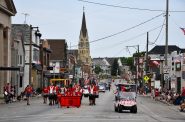 Jul 4th, 2023 by Jeramey Jannene
Jul 4th, 2023 by Jeramey Jannene
-
Juneteenth Draws Thousands To King Drive
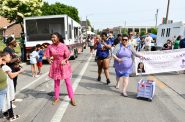 Jun 19th, 2023 by Jeramey Jannene
Jun 19th, 2023 by Jeramey Jannene
-
2022 Labor Day Parade
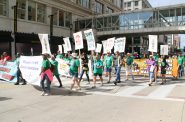 Sep 5th, 2022 by Jeramey Jannene
Sep 5th, 2022 by Jeramey Jannene



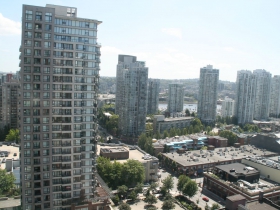
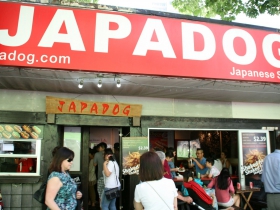
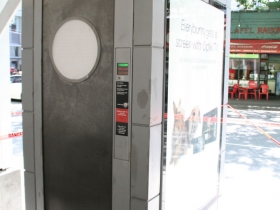
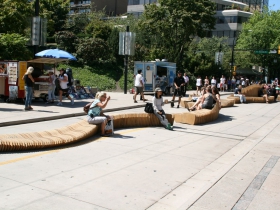
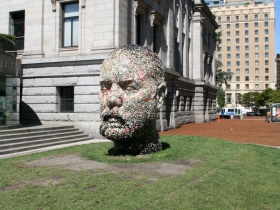
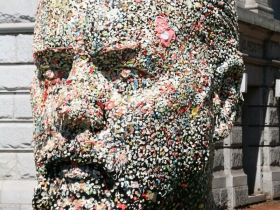

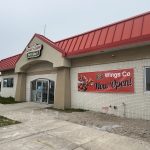

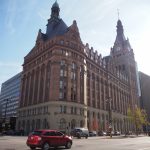
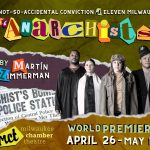





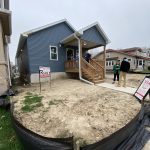




I believe Milwaukee needs to continue down the path of increased densities. Milwaukee is a dense, walkable city but too many missing teeth. In addition, we need to focus on connections. Why does every development need to be apart from everything else? Museums, Miller Park, new arena, etc. Rather than kowtowing to the local power brokers, the Mayor and DCD should be out front leading the charge for interconnecteddness. It should be a priority. I think Gary Gruneau, Marcus and Gimble care and do a lot for the city, but they shouldn’t be the ones dictating everything downtown. Downtown is a big mess largely due to their lack of long term vision and local civic leadership that is inexplicably intimidated by them.I believe we could use 40-50 thousand more people between Brady to National and west to 27th Street. Density creates energy which in turn draws more people, services and retail.
I don’t think Vancouver has any freeways. I’ve heard the Canadian Federal government doesn’t fund urban freeways, so provinces must pay for their own freeways. Some areas (like Toronto) have freeways and tollways, while others (like Vancouver) don’t. Contrast this to the US system where states build freeways so as not to lose “free” federal money. (Yes, there is MUCH more “free” federal money in play for freeways than for streetcar lines.)
Vancouver is an example of how freeways are not needed for a successful metropolitan area.
A little more Vancouver in Milwaukee would be great.
I would start by hiring a city planner to run the city planning department.
I agree Thomas. If we do have a head City Planner, they sure do keep a low profile. I think we’re stuck with the freeways we have but please… no more. Milwaukee knows how to do neighborhoods. There isn’t a Great Lakes city that does them better. In fact, I would extend that to the entire Midwest, including, am I really going to say it, yes Minneapolis and Madison. I love our neighborhoods and scale. However, we can be much more dense and we should design for the pedestrian. I addition, we need to get over our fear of investment west of the river. I love what Rick Barrett did by developing the Moderne in Westown. Does anyone know what the vision for downtown is west of the river? We can’t let property owners, managers and power brokers dictate. We need a comprehensive plan driven by the city.
Finally, I like what’s happening on King Drive, but there is not enough demand to fill up all those store fronts. Ultimately, a traffic generating development will have to be built off North Avenue near the freeway interchange. I also think the city should package Holton Street up for development between North and and the Resevior. Amazing views and great neighborhoods to the east and west. The street just looks so rough.
Vancouver’s Green City Agenda (http://vancouver.ca/green-vancouver/a-bright-green-future.aspx) asks for tall buildings to be set back from the street by pedestrian scaled development. Pedestrian scaled development encourages Jane Jacob’s ‘eyes on the street’ as well as a human scale to walking between roads filled with cars and buildings. It is a zoning code agreed upon by the city that enhances public space, pedestrian activity and sensitive increase in density. It is quite different from the business of parceling out land to the highest bidder for new buildings. It is the work of a sustainable progressive city planner capturing the imagination of the public and private sector to work together for the good of the city and its populace and its specific location and environment.
You have just scratched the surface of Vancouver. Dig deeper and you will see what life is like at that particular city. For example, can you afford living there? What is the culture like? What do the people living there feel about their city? What are the upsides and downsides?
Walter,
Of course I have just scratched the surface. My photo gallery is merely my observations of being their four days. I did talk to a number of people, but I by no means can assure it to be a fair cross section of the city.
What do you think of Vancouver?
Thanks Linda. I assumed as much was the case with the zoning code, but hadn’t researched it extensively yet.
How is it different than parceling out land to the highest bidder though? It seems to be just a zoning code that produces substantial public and private benefit by better defining what is desired.
But how much money will it take!??!?! How many choo choos does the left need to build before we figure it out!
Enough lefty experiments like Vancouver! Show them a real city like Orlando or Dallas or Long Beach!!!!!!!111
Orlando is a real city?
Vancouver is a great city. I have traveled there over the past 30 years and have seen it progress to a model of urban development. One major improvement is that Vancouver transformed industrial waterfront into vibrant residential and commercial neighborhoods. Milwaukee doesn’t have a plan for its inner harbor, a great asset waiting to be redeveloped. Currently our inner harbor is the home of an ugly sewage treatment facility (hard to move, but why so ugly?), a scrap salvage yard, piles of salt, loading areas for a limited shipping season of primarily low-value commodities, boat storage warehouses, a butt-ugly Hoan Bridge/freeway, and other land uses that employ few, and are not the best use of prime waterfront property.
The mayor and the city apparently are not capable of, and don’t have the vision or drive, to make big plans and see them to fruition. There are no plans or vision that I know of for Milwaukee’s inner harbor area. Rebuilding the elevated I-794 freeway through downtown and rebuilding the Hoan Bridge are dumb ideas that will scar that part of the city for another 40 years. The mayor talked about replacing the Hoan Bridge with a more urban, non-freeway thoroughfare, he got some resistance from entrenched parties, and then he quit. Another obstacle is the local longshoremen’s union. From what I have read, they represent very few jobs, but they have political clout. Milwaukee needs leadership with a vision, drive, and persistence.
@Bill,
The city does have plans for the inner harbor.
Thank you David. Apparently the plan is not very prominent. I searched for it and found the following from the ReFreshMKE plan- “The City of Milwaukee’s involvement in the Inner Harbor effort began in 2010, when the Common Council adopted a redevelopment plan for the area in and around the Inner Harbor Study Area. That plan is essentially a zoning plan, which recommends changes to the zoning of some of the properties and reaffirms the zoning of others. That plan protects the current industrial uses at the Port of Milwaukee and provides a better transition between areas with heavy industrial use and the nearby residential neighborhoods. ”
Is that the current plan?
Thanks